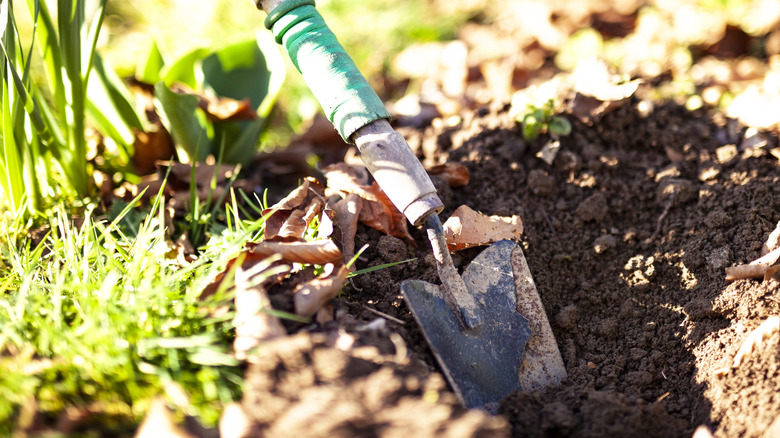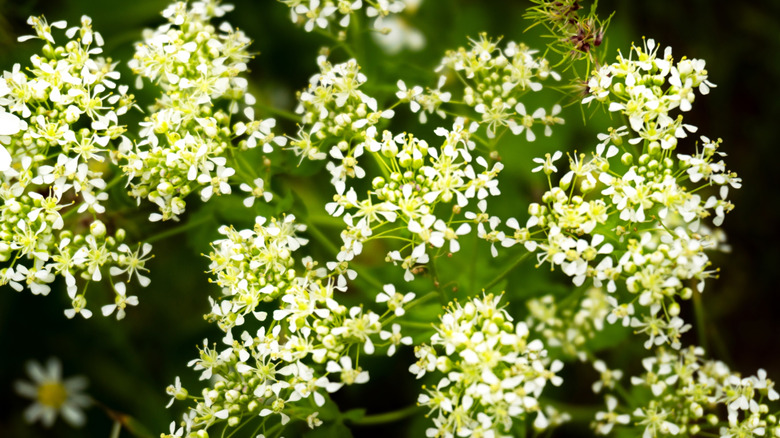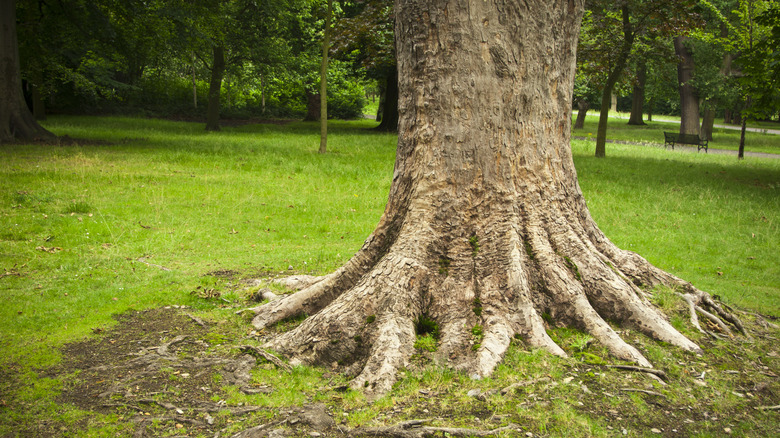Reliable Flowering Ground Covers That Are Perfect For Planting Around Trees
Ground covers are the ultimate team players of landscaping. They're the plants that stay low, spreading out like a mat, covering bare spots in your lawn where soil rudely pokes through. Like, for example, that dirt patch below your tree. If you want a garden that looks effortlessly lush and put together, these little guys are a must.
But not all plants are well suited for living under the shade of a tree or sharing soil and water with its roots. It's those very conditions that make the grass below the tree look kind of bare, kind of blah. For the same reasons, some ground covers much prefer full sun to the shade of a tree. Some others, like some evergreen hardy geraniums (Geranium spp.), violets (Viola spp.), or sweet woodruffs (Galium odoratum), can tolerate shade and bring some color to your yard with their delicate flowers.
Ground covers are meant to be low maintenance, meaning you don't have to fuss over them. They help keep weeds at bay, all while staying low to the ground and blending in with the grass. So there's no reason to settle for that patchy mess when you can easily turn the spot below your tree into a vibrant oasis. Here's what you need to know about upgrading your garden and making those tree bases pop.
Ground covers that will love living under a tree
Several flowering ground cover plants can thrive under a tree. Depending on your location and the specific weather and soil conditions, you'll have plenty of options. As always, consider cultivars that are well-suited to your climate zone.
Violets are a lovely, low-growing flower that can reach up to 12 inches tall. They're beloved for their delicate yet versatile nature and easy maintenance. There are many cultivars of violets, but most thrive in partial shade with well-drained soil in zones 3 through 9. If you're looking for another adaptable option that can flourish in full shade beneath a dense tree, try sweet woodruff . This charming ground cover grows up to 6 inches tall and thrives in zones 4 through 9. For a pop of color, consider cultivars of hardy geraniums that love shade. For example, the semi-evergreen Geranium cantabrigiense 'Biokovo' would look great in zones 4 to 8.
Other ideal options for flowering ground covers could include options with large, thick leaves. These include Japanese spurge (Pachysandra terminalis) and its tiny white, spiky flowers. Bergenias will shine with their pretty pink clusters, and bugleweed (Ajuga) 'Black Scallop' has dark, almost purple leaves. These plants not only produce flowers, but also feature tons of foliage, which is great for covering the ground below.
How to plant around tree roots
Every plant has its own specific care needs, but one thing's for sure — planting around tree roots is a whole different ball game! A lot of people worry about damaging the tree or aren't sure how to plant when there's a web of roots just below the surface. But don't let that stop you from adding a beautiful flowering ground cover under your tree. For gardening problems, there are always creative plant solutions!
You might think that adding a layer of soil over the tree's root zone to plant into is a good idea, but it's actually not, and it can even harm the tree. Many of its roots need to stay close to the surface to absorb moisture and nutrients, so covering them up with extra soil can smother them. Aesthetics are great, but not at the expense of a healthy tree!
The best approach is to carefully plant small plug plants from a 4-inch pot. This should work well because it won't require deep digging and can fit between bigger roots. If you absolutely have to cut any roots, don't remove anything thicker than your finger. To help your new ground cover establish itself at first, keep an eye on it and water more frequently as needed, as this reduces competition between the tree and the plants. As for the best time to plant? That depends on the species and cultivars you've chosen and your local climate. A little research will go a long way to ensure your new plants thrive, and never hesitate to ask your local garden store for advice!


